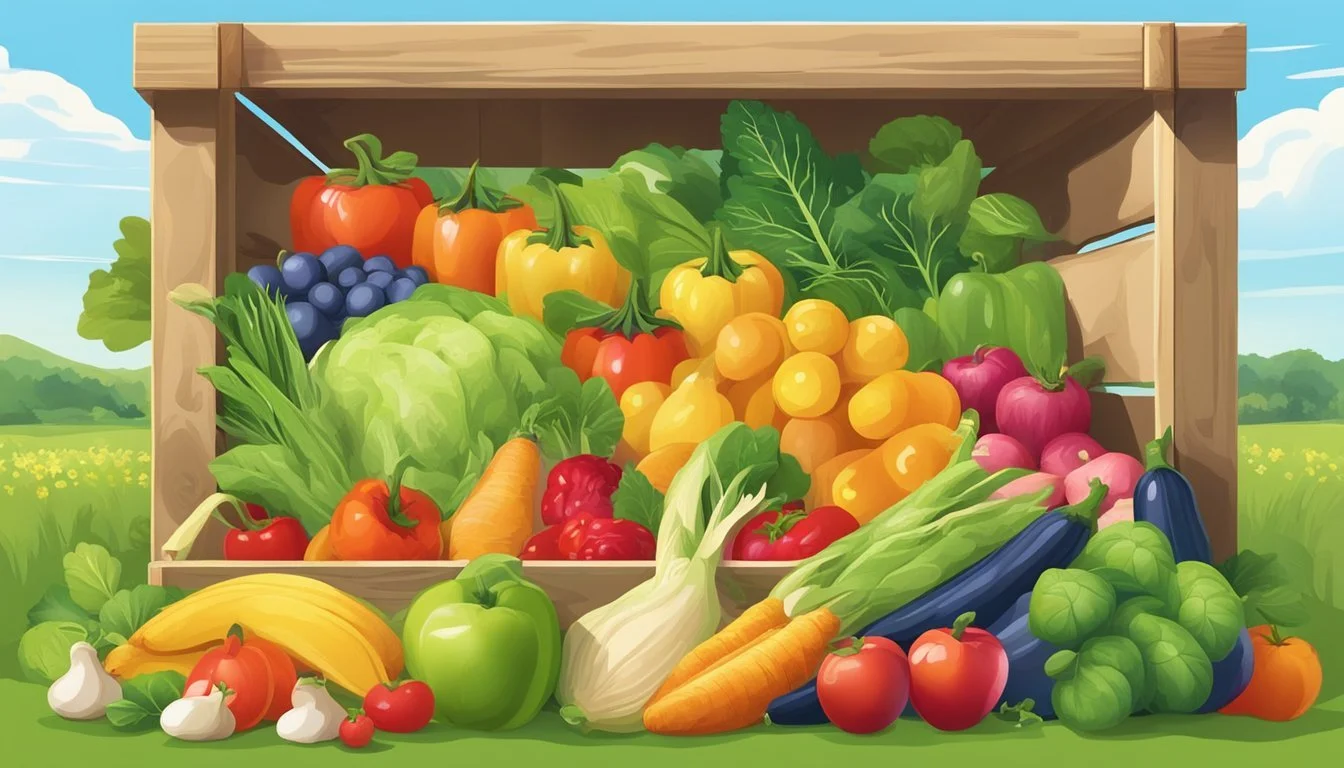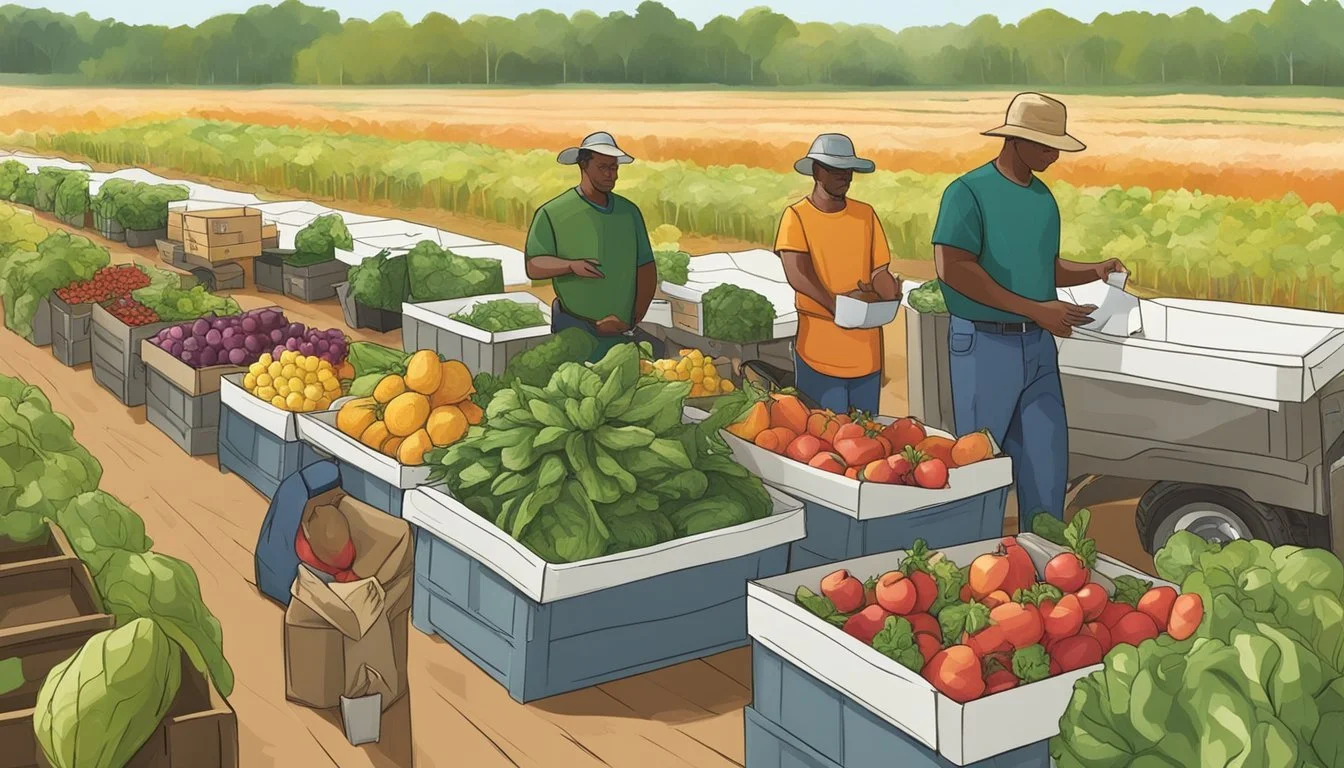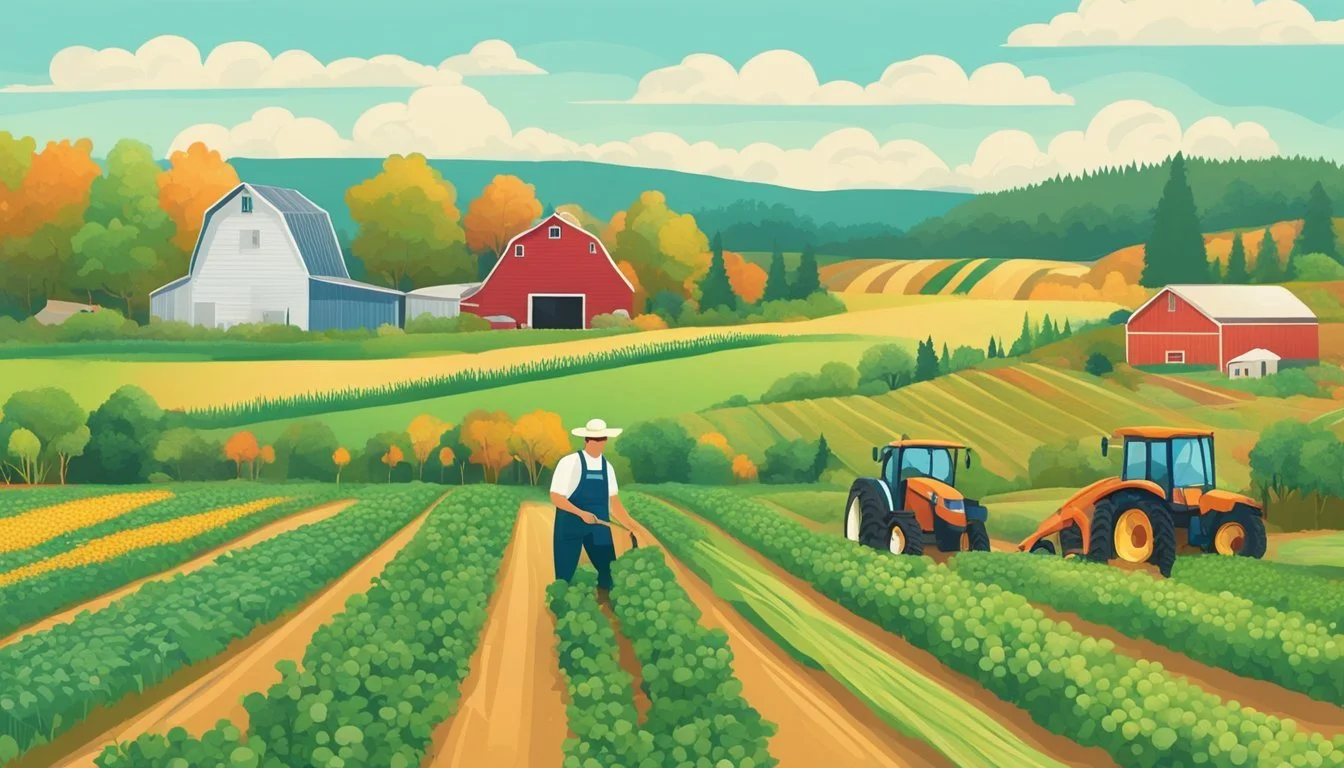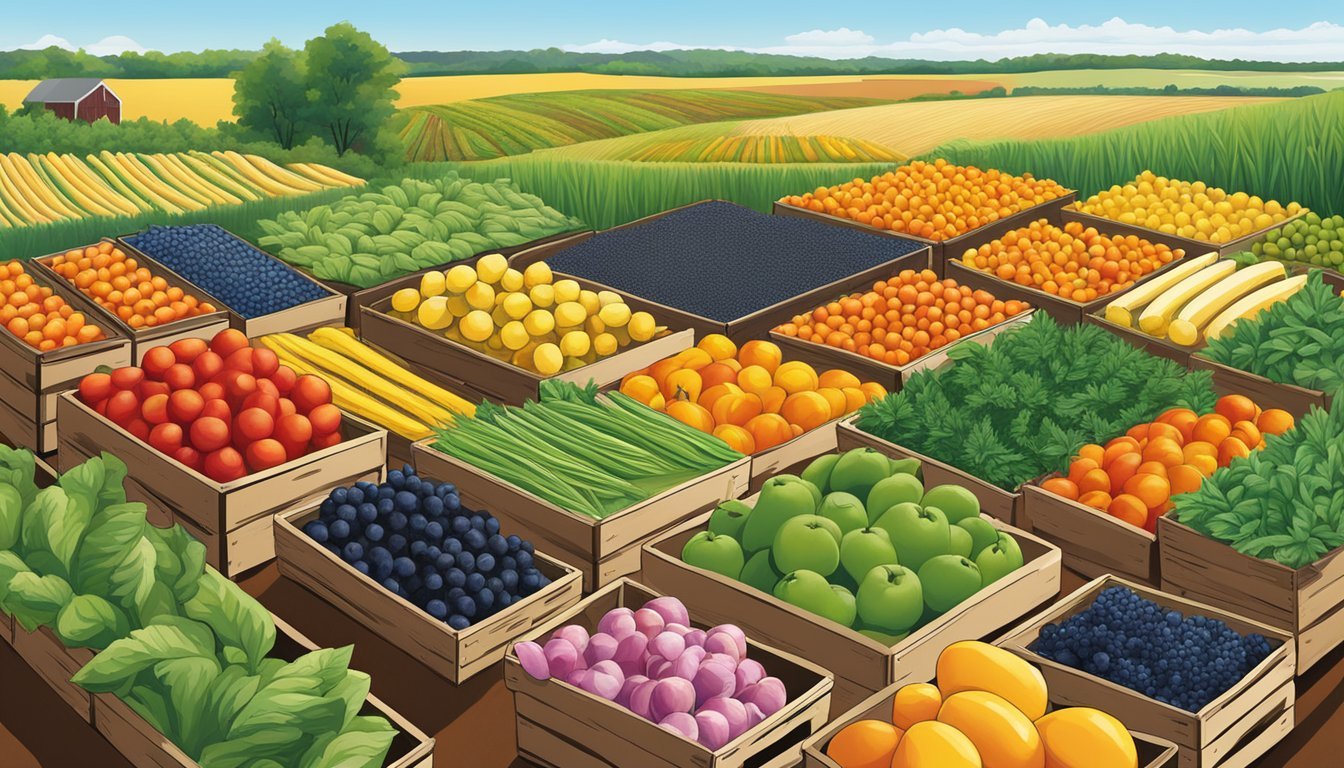Community Supported Agriculture (CSA) in Minnesota
Sustaining Local Farms & Families
Community Supported Agriculture, commonly referred to as CSA, is a model of food production and distribution that directly connects farmers and consumers in Minnesota. In this system, individuals purchase shares of a farm's harvest in advance, supporting the agricultural process both financially and communally. This upfront investment allows farmers to plan for the season, purchase necessary seeds, equipment, and supplies, and focus on land stewardship and quality produce without the immediate financial pressures of the market.
Farmers in Minnesota offer a variety of CSA programs, providing fresh, local, and seasonal produce directly to their members throughout the growing season. These shares often include a box of vegetables, but can also encompass other farm products like fruits, eggs, dairy, and meats depending on the farm's offerings. CSA members not only gain regular access to sustainable and healthy food but also share in the risks of farming, such as poor weather or pest outbreaks, while celebrating the rewards of bountiful harvests.
Minnesota boasts a rich landscape for Community Supported Agriculture with more than 80 CSA farms statewide that contribute to a resilient local food system. Participation in a CSA allows consumers to form a relationship with the land and the people who grow their food, fostering a community that values environmental stewardship and sustainable agricultural practices. Through CSA, Minnesotans connect with the cycles of nature, share the responsibilities of farming, and nurture a symbiotic relationship that sustains both the land and the community at large.
Understanding CSA
Community Supported Agriculture (CSA) in Minnesota exemplifies a symbiotic relationship between local farmers and community members, fostering a connection rooted in trust and mutual benefit.
Principles of CSA
The foundation of a CSA model is built upon a partnership where consumers, also known as members, directly support farmers, ensuring the sustainability of local agriculture. In this system, members buy shares of the farm's output before the growing season. This pre-season investment allows farmers to plan accordingly and guarantees financial support for the farm operations.
Benefits for Consumers and Farmers
For Consumers:
Freshness: Access to fresh, locally grown produce.
Knowledge: Insight into the farming process and where their food comes from.
For Farmers:
Financial Security: Pre-season funding helps in planning and resource allocation.
Market Assurance: A guaranteed market for their produce reduces marketing and financial risks.
CSA Membership and Shares
Becoming a CSA member typically involves purchasing a share of the farm's harvest. This share is often represented by a weekly or bi-weekly delivery of vegetables and other farm products. The shares vary in size, suitable for individuals or families, and sometimes offer different levels of commitment.
Types of Shares:
Full Share: Sufficient for a family for a week.
Half Share: Ideal for individuals or small families.
Season Length: Ranges from an 18-week season to year-round options.
Pick-up Locations: Over 160 pick-up locations available statewide in Minnesota.
By choosing a CSA, consumers in Minnesota can engage directly with local farming, enjoying the rewards of fresh produce while supporting the agricultural community.
How CSA Operates in Minnesota
Community Supported Agriculture (CSA) in Minnesota offers a mutually beneficial partnership between local farms and consumers. This system emphasizes local, sustainably grown produce, ensuring a direct connection between Minnesotans and their food source.
Local CSA Farms
Minnesota boasts over 80 CSA farms statewide, offering consumers a chance to support farm operations directly. These farms often provide more than just fresh produce; they engage members with unique experiences such as on-farm activities. Minnesota Grown CSA farms can feature a range of pick-up locations, extending their reach beyond the immediate area of the farm itself.
Notable CSA Farms in Minnesota:
Farm A – Offers varied vegetable baskets and on-farm events
Farm B – Known for organic practices and a community-centric approach
Farm C – Provides a wide array of produce with convenient urban drop sites
Seasonal Produce Offered
A hallmark of Minnesota's CSA programs is the ultra-fresh food that is specific to the growing season. Members typically receive a share of the farm's harvest, which includes a variety of vegetables and other seasonal food. This not only ensures peak flavor and nutrition but also reinforces the farm-to-table connection.
Typical Seasonal Produce Timeline:
Season Examples of Produce Spring Lettuce, Radishes, Peas Summer Tomatoes, Corn, Zucchini Autumn Squash, Pumpkins, Kale Winter Storage vegetables, Potatoes, Onions
By participating in CSA, Minnesotans experience a continuous cycle of fresh, seasonal produce, directly from their local CSA farms.
Environmental and Economic Impacts
Community-supported agriculture (CSA) in Minnesota plays a noteworthy role in promoting sustainable farming practices and bolstering the local economy. These impacts reflect a shift toward a more environmentally conscious food system that is economically beneficial for both producers and consumers within the region.
Sustainable Farming Practices
CSAs in Minnesota are instrumental in advancing sustainable agriculture by reducing the carbon footprint associated with food production and transportation. They implement practices such as crop rotation, organic farming, and the reduction of chemical inputs, which not only conserve the environment but also promote soil health and biodiversity.
Crop Rotation: Enhances soil fertility and helps control pests and diseases.
Organic Farming: Minimizes chemical use, preserving water quality and wildlife.
Conservation Efforts: Preservation of water resources and promotion of habitats.
Local Economy and Food System
The CSA model greatly supports Minnesota's local economy and contributes to a resilient food system. By providing a direct connection between farmers and consumers, CSAs keep the financial benefits within local communities, leading to:
Economic Support for Farmers: Farmers receive a fair price for their products, ensuring the viability of small-scale operations.
Local Job Creation: CSA operations create local jobs and support businesses involved in the local food distribution.
Freshness and Seasonality: Consumers benefit from fresh, locally grown products that adhere to natural growing seasons.
The model also encourages food literacy and community engagement, as consumers become active participants in the agricultural process, understanding where and how their food is cultivated.
Seasonal and Fresh Food
Community Supported Agriculture in Minnesota offers a robust variety of seasonal and fresh food to its members. They benefit from a direct connection to the farmland and its cycles, receiving a share of the harvest that is ripe with fresh fruits and veggies.
Harvest Season and Availability
Harvest Time: The typical CSA harvest season in Minnesota spans from late spring to early fall. During this period, members can expect regular deliveries or pickups of their shares.
Spring usually sees an abundance of leafy greens, radishes, and herbs.
Summer brings a variety of fruits and vegetables such as tomatoes, cucumbers, berries, and melons.
Fall is rich with root vegetables, squash, and late-season greens.
Health Benefits of Seasonal Food
Flavor and Nutrient Density: Seasonal produce is fresh, having been harvested at the peak of its taste and nutritional value. This ensures that the food is not only more flavorful but also loaded with a higher content of vitamins and antioxidants, which are crucial for maintaining good health.
Dietary Diversity: Engaging with a CSA encourages members to incorporate a wider variety of fruits and vegetables into their diets, which can lead to a more diverse and nutrient-rich diet.
Challenges and Risks of CSA
Community Supported Agriculture in Minnesota, like any agricultural endeavor, involves inherent challenges and risks, particularly with weather variabilities and the concept of shared risk between producers and consumers.
Weather Dependencies
Minnesota's CSA farms are acutely affected by weather patterns. As producers rely on consistent seasonal weather, any deviations — such as unseasonal temperatures, early frosts, or excessive rainfall — can impact crop yields. Weather unpredictability exposes CSA programs to uncertainty in produce quantity and variety, creating a significant challenge in planning and meeting consumer expectations.
Shared Risk and Responsibility
The CSA model is built on a foundation of shared risk between farmers and consumers. Participants in CSA programs often pay for their shares of the harvest upfront, understanding that they bear part of the risk of crop failure due to factors beyond the farmer's control. This financial model helps ensure that farms can survive through adverse conditions to reach the next growing season, fostering a collective responsibility for local agricultural sustainability. However, for consumers, this means there is always an element of risk exposure in terms of the quantity and sometimes the quality of the harvest they receive.
Logistics and Distribution
Community Supported Agriculture in Minnesota is highly structured in terms of logistics and distribution to ensure that CSA shares reach members effectively. The system is designed around pick-up locations and a symbiotic relationship between the community and farms.
Pick-Up Locations and Methods
In Minnesota, Community Supported Agriculture programs emphasize convenience for their members through multiple pick-up locations. Farms like Pahl Farms offer a system of pick-up points that usually operate within specific times for collection. For example:
Pahl’s Market: 1pm to 8pm
Von Hanson Meats: 1pm to 7pm
Minneapolis Great Harvest Bread: 1pm to 5pm
Other Great Harvest Bread locations: 1pm to 6pm
These locations are strategically chosen to be accessible to members, often taking place at local businesses such as butcher shops and bakeries.
Community and Farm Relationship
The relationship between the community and the farm is crucial in a CSA model. Members who purchase CSA shares are more than just consumers; they become partners with the farm. This partnership involves sharing the inherent risks of farming, including poor weather, drought, and pests. In exchange, members gain access to fresh produce directly from the farm and become deeply connected with the source of their food. Other benefits can include:
On-farm activities, fostering a closer bond between members and the farming process.
Weekly newsletters, keeping members informed on farm happenings and crop progress.
This direct farm-to-community engagement is fundamental to the success and sustainability of CSA programs in Minnesota.
Support and Education for CSA Members
Community Supported Agriculture (CSA) programs in Minnesota not only provide members with fresh, locally-grown produce but also offer educational resources to enhance their experience. These include tips for cooking with a range of vegetables and insights into the agricultural practices behind their food.
Cooking with CSA Produce
Members often receive a variety of vegetables that may be new to them. To assist with this, CSA farms often provide recipes specifically designed for their produce. These recipes help members discover how to prepare and combine seasonal items in delicious ways.
Sample of Recipe Resources Provided by CSAs:
Recipe cards with each delivery
Digital cookbooks or cooking guides emailed to CSA members
Online access to a recipe database
Instructional cooking workshops are also sometimes offered to teach members how to maximize flavor and nutrition from their CSA vegetables. Cooking demonstrations focus on techniques such as:
Cooking Techniques Highlighted:
Roasting
Sautéing
Salad preparation
Preservation methods (e.g., canning, freezing)
Learning About Agriculture
Education about agriculture is a vital part of the CSA experience. Members have the opportunity to learn directly from farmers about the methods and challenges of sustainable farming. Topics often covered in agricultural education include:
Agricultural Topics:
Crop rotation
Organic farming practices
Integrated pest management
Events like farm visits and workshops are structured to engage members in the farming process. Here, they can gain firsthand insight into planting, harvesting, and the ecology of the farm.
Educational Opportunities Include:
Guided farm tours
Volunteer work days
Seasonal newsletters explaining farm operations
By providing these support and educational resources, Minnesota CSA programs ensure that their members are well-equipped to enjoy and understand the full breadth of what their local agriculture has to offer.
The Future of CSA in Minnesota
The trajectory of Community Supported Agriculture in Minnesota points towards an integration of innovative practices and broader community reach, setting a foundation for sustainable growth in local food systems.
Innovation in Farming
In Minnesota, CSA farms are increasingly embracing innovative practices to ensure sustainable food production and soil health. Technologies that conserve water and enrich the soil are becoming more prevalent. These advances support long-term land productivity, crucial for the future success of CSA operations. There is also a growing trend toward integrating renewable energy sources into farming operations, reducing reliance on non-renewable resources.
Expanding CSA Reach
The expansion of CSA in Minnesota not only involves innovative farming techniques but also cultivating stronger partnerships to broaden their influence. There is an emerging focus on increasing accessibility to fresh, locally-sourced produce through CSAs. Efforts to connect with more urban consumers and create educational opportunities around local agriculture aim to boost membership and support for local farms. The partnerships formed between farmers, consumers, and local institutions are vital in creating robust local food economies and ensuring the growth of CSA programs across the state.
Selection of Minnesota-Grown Crops
Minnesota's climate and soil allow for a diverse array of crops, which are carefully cultivated by local CSA farms. They provide a selection of fresh, locally-grown produce and artisanal products that members can enjoy throughout the growing season.
Popular Vegetables and Fruits
Minnesota CSA farms offer a rich variety of vegetables and fruits that are popular among their community members. These crops are known for their fresh taste and high quality.
Vegetables:
Broccoli: Known for its nutritional benefits and versatility.
Tomatoes: Ripe and full-flavored, a staple in many summer dishes.
Sweet Corn: A classic Minnesota staple that is eagerly anticipated every summer.
Peppers: Available in various types, from sweet to hot, adding color and flavor.
Green Beans: Often picked at the peak of their tenderness.
Winter Squash: Hardy and suitable for long storage, providing variety in the colder months.
Fruits:
Strawberries: Juicy and sweet, typically available in early summer.
Pumpkins: Not just for decoration, pumpkins are versatile and used in both savory and sweet dishes.
Specialty Items and Add-Ons
Alongside standard produce, many CSA farms in Minnesota also offer specialty items and add-ons. These often include artisanal products that complement the weekly vegetable and fruit shares.
Baked Goods: Freshly baked breads, pies, and other treats from local grains.
Additional Produce: Farmers may also offer unique heirloom varieties or less common produce as special add-ons.
CSA members appreciate that these extras can enhance their culinary experiences and support local agriculture beyond the standard crops.










